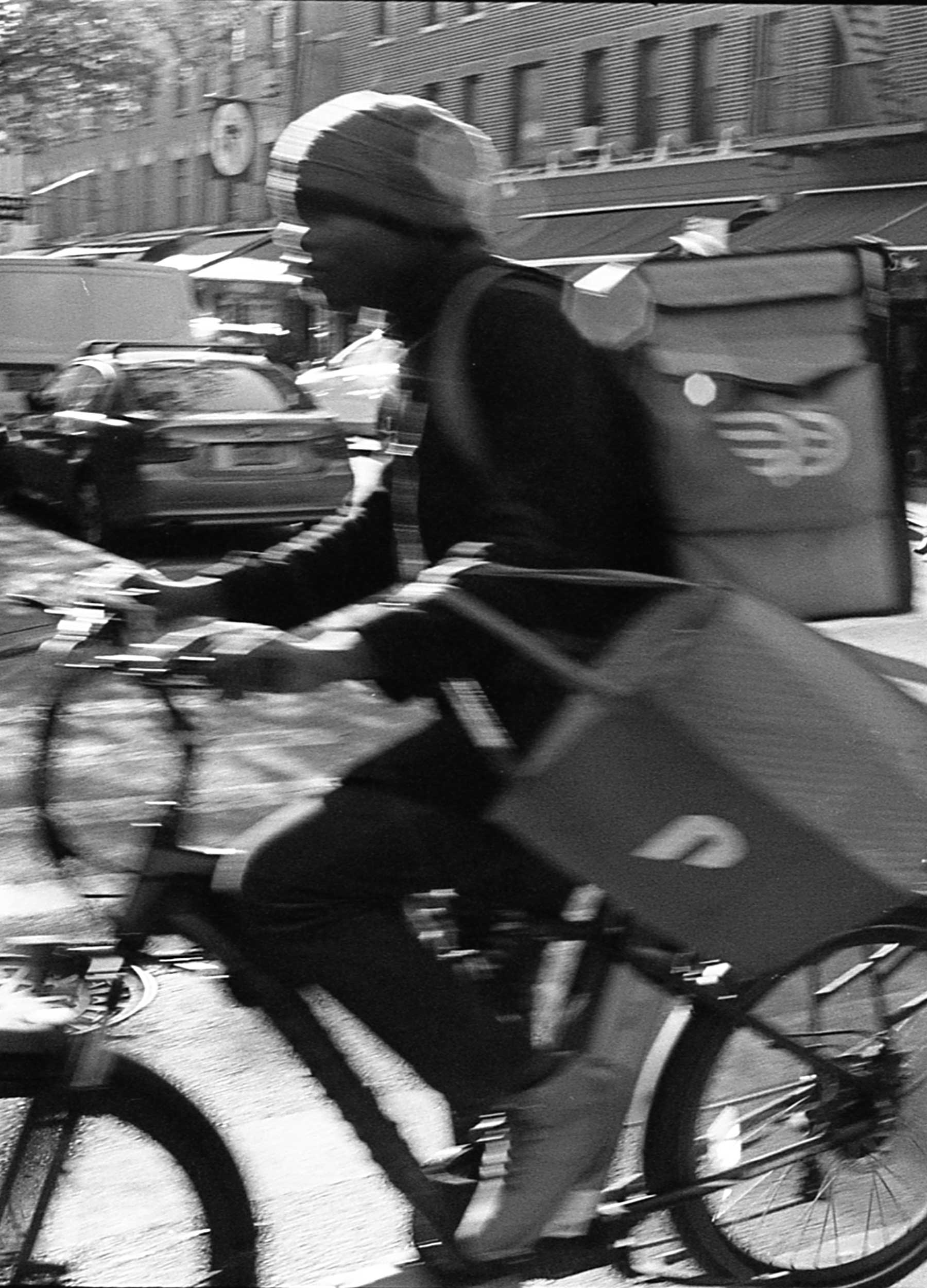
Issue 2 | Winter 2020
Photo Essay
Photo Essay: New York Delivery Workers
Giancarlo Valentine captures the increasingly invisible workforce of delivery workers.
By: Jeff Ihaza
Photography: Giancarlo Valentine
It tends to happen all at once. The forces that push you to a place where you never imagined going. You’re pacing around your apartment, refreshing your bank’s app in hopes of some sort of error. There’s almost never an error. Never a glitch that accidentally adds a zero to your ten-dollar account balance. So, your mind races. What’s possible? You look in your closet to see if there’s anything worth selling. You contemplate putting your cellphone, your computer, anything you own with a hard drive, on eBay. You consider the window of time between “receiving” payment and receiving payment. You send another follow-up email to the job you interviewed for. Maybe they just forgot! Optimism, sometimes, seems the most expensive.
I guess that’s the definition of precarity, a term increasingly prevalent as unemployment figures plummet in tandem with people’s overall sense of security. There are any number of ways to just barely escape calamity, but a dwindling number of ways to actually make a living. There’s a eureka moment when you realize you can deliver food on one of the many apps that offer to make urban life easier for those who can’t be bothered to walk to their favorite restaurant. You see the ads everywhere. Make $2000 a month, they say. It’s not necessarily enough, but it’s something. In another time, being a delivery person required a bike or a car. But in today’s world, you can sign up to be what Uber Eats calls a “walker,” which is exactly as it sounds.
It’s easy, frictionless money. No resumé, no references.
In 2012, The New York Department of Transportation estimated that there were 50,000 food delivery bikers in New York City, a number that has likely swelled with the growth of apps like Postmates and Uber Eats. The profit margins remain dismal. An unskilled bike courier might average less than $10 per hour. Few net out over New York’s $15 minimum wage. According to researchers at CUNY, almost a third of delivery cyclists experienced at least one on-the-job injury in 2018. Last year, in New York, more than four bike messengers were killed in accidents involving cars. In 2017, a car struck and killed Edwin Ajacalon, a 14-year old Guatemalan immigrant working for a food delivery app.
Meanwhile, companies like Uber and Amazon are betting big on the profit potential of on-demand delivery. Uber is hoping its Eats service will be a key to profitability. Its revenue for Uber Eats grew 149 percent to $1.5 billion in 2018 — 13 percent of its total annual revenue. Amazon is following suit, rolling out its own Uber Eats competitor, Amazon Restaurants.
It’s hard to overstate how dehumanizing the work can be. But also how thrilling. In the summers of 2017 and 2018, I delivered food for Uber Eats. When we met with bikers for this shoot, they laughed and called me a rookie. Some had spent the past decade on their bikes. Familiar stories filtered in and out. Rude customers, the borderline psychotic quotas required on certain apps. One courier, Tyler, used the Uber Eats “walker” function — except he delivered food on roller skates, a brilliant hack. He’d just been laid off and was using the platform as a means of survival. “You have to appreciate the times of struggle,” he told me.